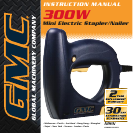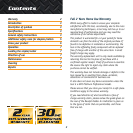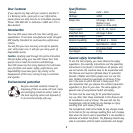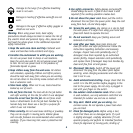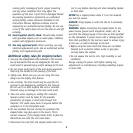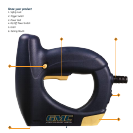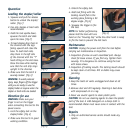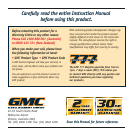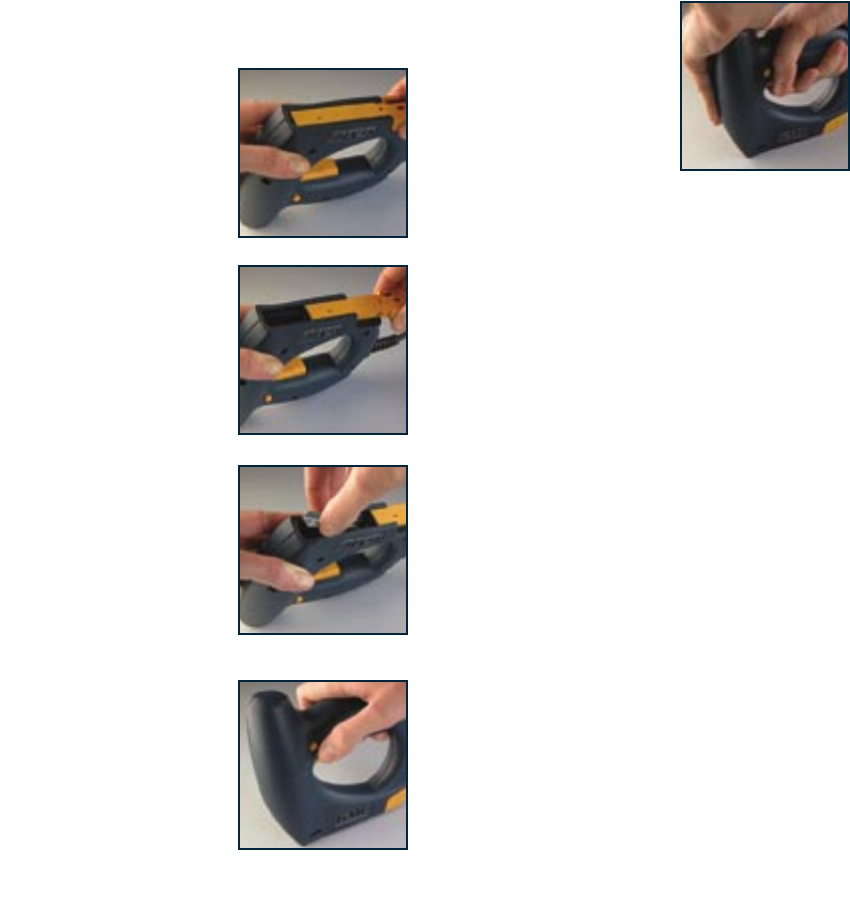
7
Operation
Loading the stapler/nailer
1. Squeeze and pull the release
button to unlock the stapler/
nailer. [Fig 1]
2. Use only staples or brad nails
recommended.
3. Hold the tool upside down,
squeeze the latch and slide
open the base. [Fig 2]
4. To load staples drop them in
the channel with the legs
facing upward and close the
base. To load brad nails,
drop them in the left side
of the channel with the “T”
head sitting on the slot base.
Close the base while making
sure that the nail strip stays
upright in the channel.
5. Make sure that the latch is
securely locked. [Fig 3]
WARNING: To avoid personal
injury, keep fingers off the trigger
until you are ready to use the
stapler/nailer at anyone when the
stapler or brad nails are loaded.
Direction for use
WARNING: Make sure your
finger is not on the trigger
when connecting the tool to the
power source.
1. Lock the safety lock on the
stapler/nailer. [Fig 4]
2. Make sure the tool is in good
working condition.
3. Unlock the safety lock.
4. Hold tool firmly with the
tacking mouth flat to the
working place forming a 90
degree angle. [Fig 5]
5. Squeeze the trigger to fire
the tool.
NOTE: For better performance,
please hold the tool with one
hand on the “Housing Cap” while the other hand is ready
to fire the tool to prevent the kick back.
Maintenance
CAUTION: Unplug the power cord from the tool before
carrying out maintenance or inspection.
1. Inspection of screw on each assembled part. Always
check for loose screws. If you find any, tighten them
securely. It is dangerous to continue using the tool
with loose screws.
2. Inspection of tacking mouth. The tacking mouth should
be kept clean at all times. Dirt or debris may cause
jamming.
Cleaning
1. Keep the tool’s air vents unclogged and clean at all
times.
2. Remove dust and dirt regularly. Cleaning is best done
with compressed air or a rag.
3. Never use caustic agents to clean plastic parts.
CAUTION: Do not use cleaning agents to clean the plastic
part of the tool. A mild detergent on a damp cloth is
recommended. Water must never come in contact with the
tool.
Repairs
1. Only an authorized service centre should make any
repairs.
[Fig 1]
[Fig 2]
[Fig 3]
[Fig 4]
[Fig 5]



